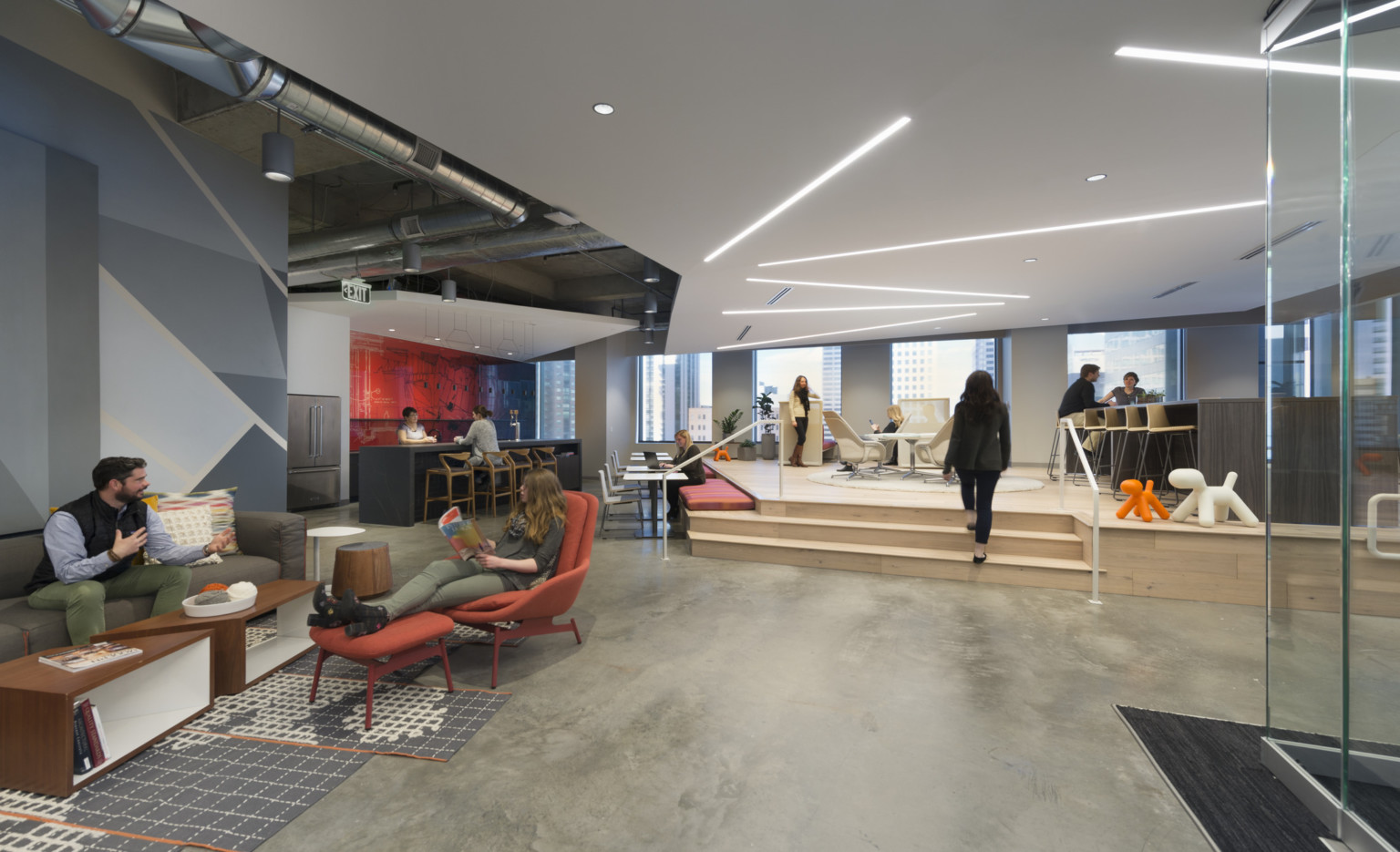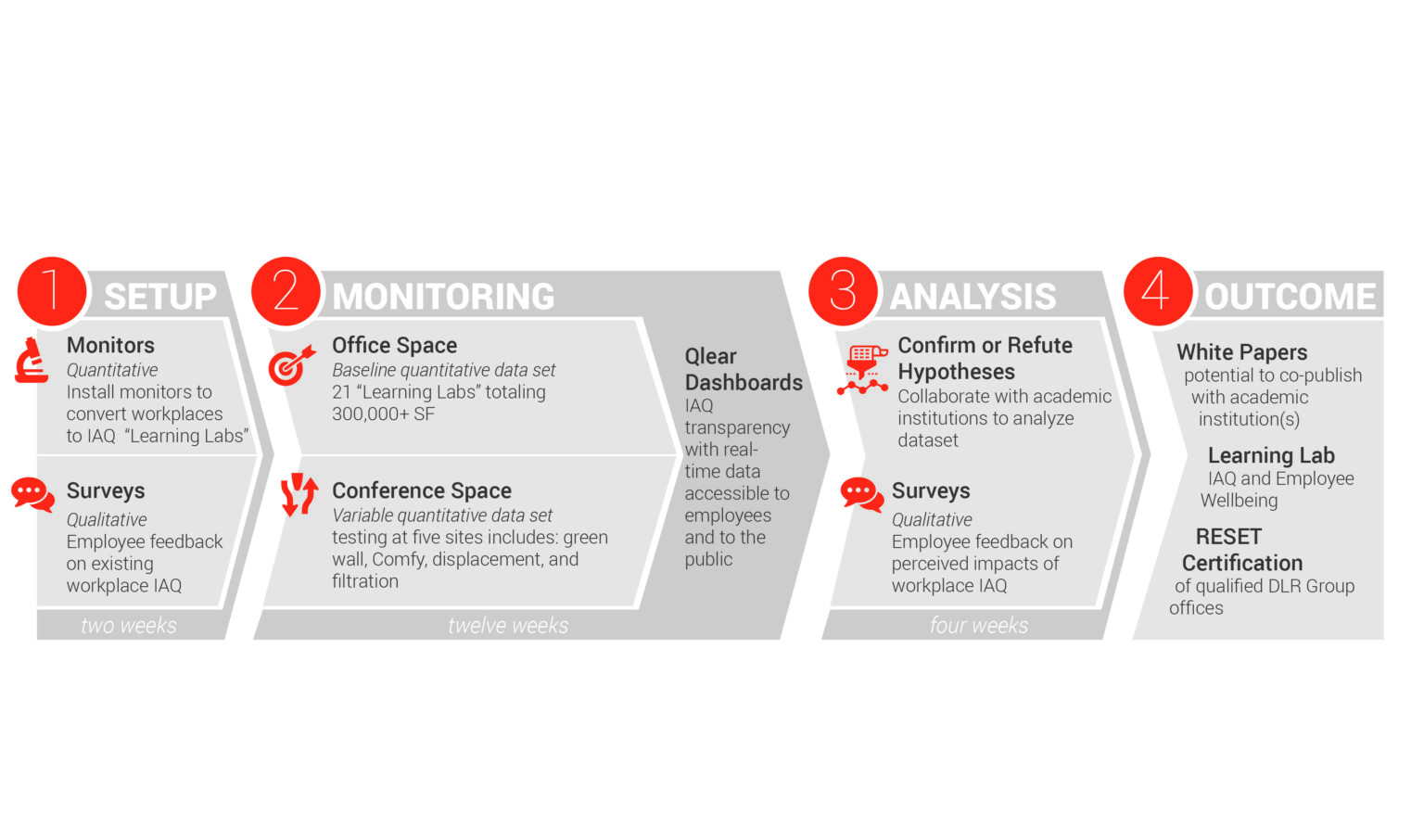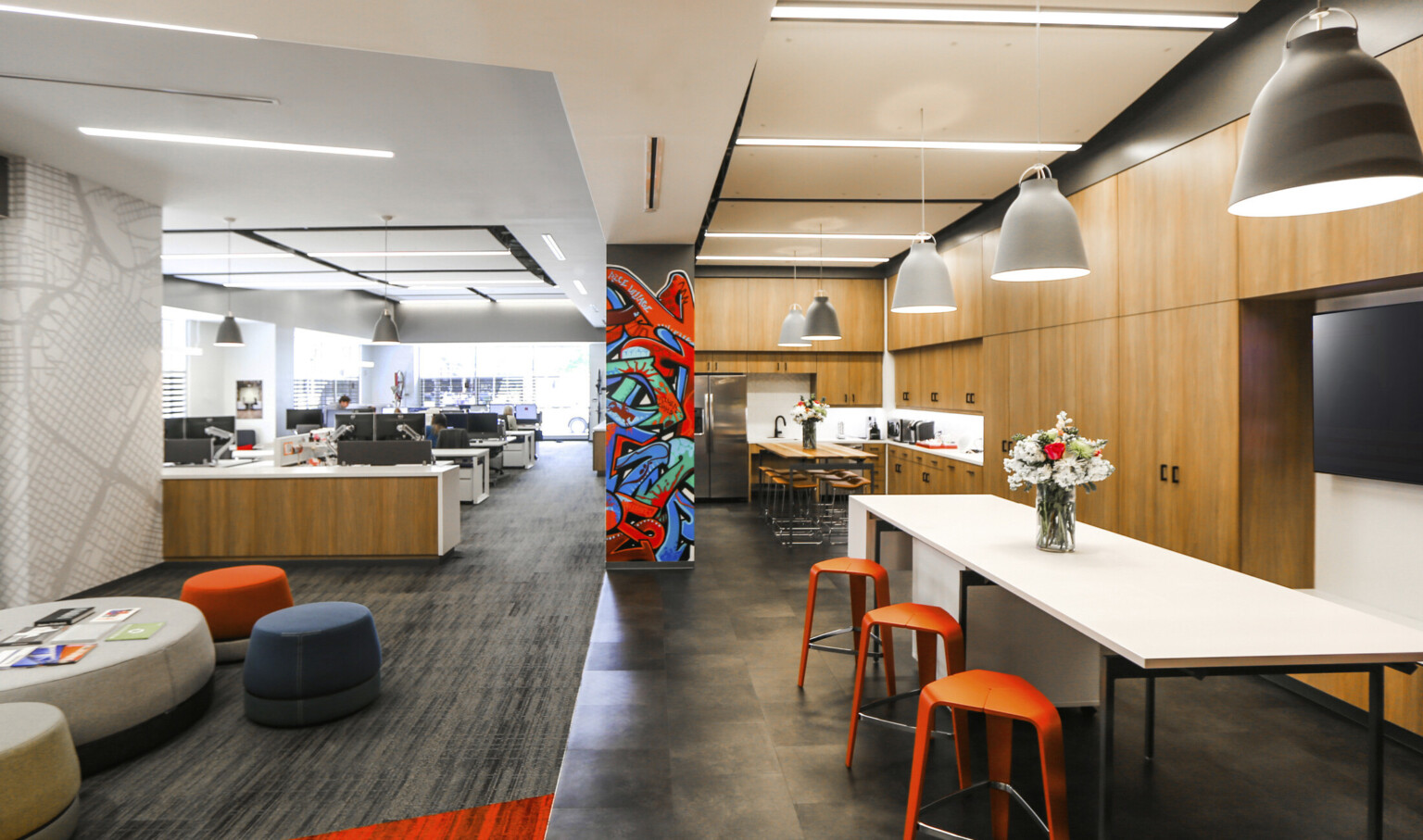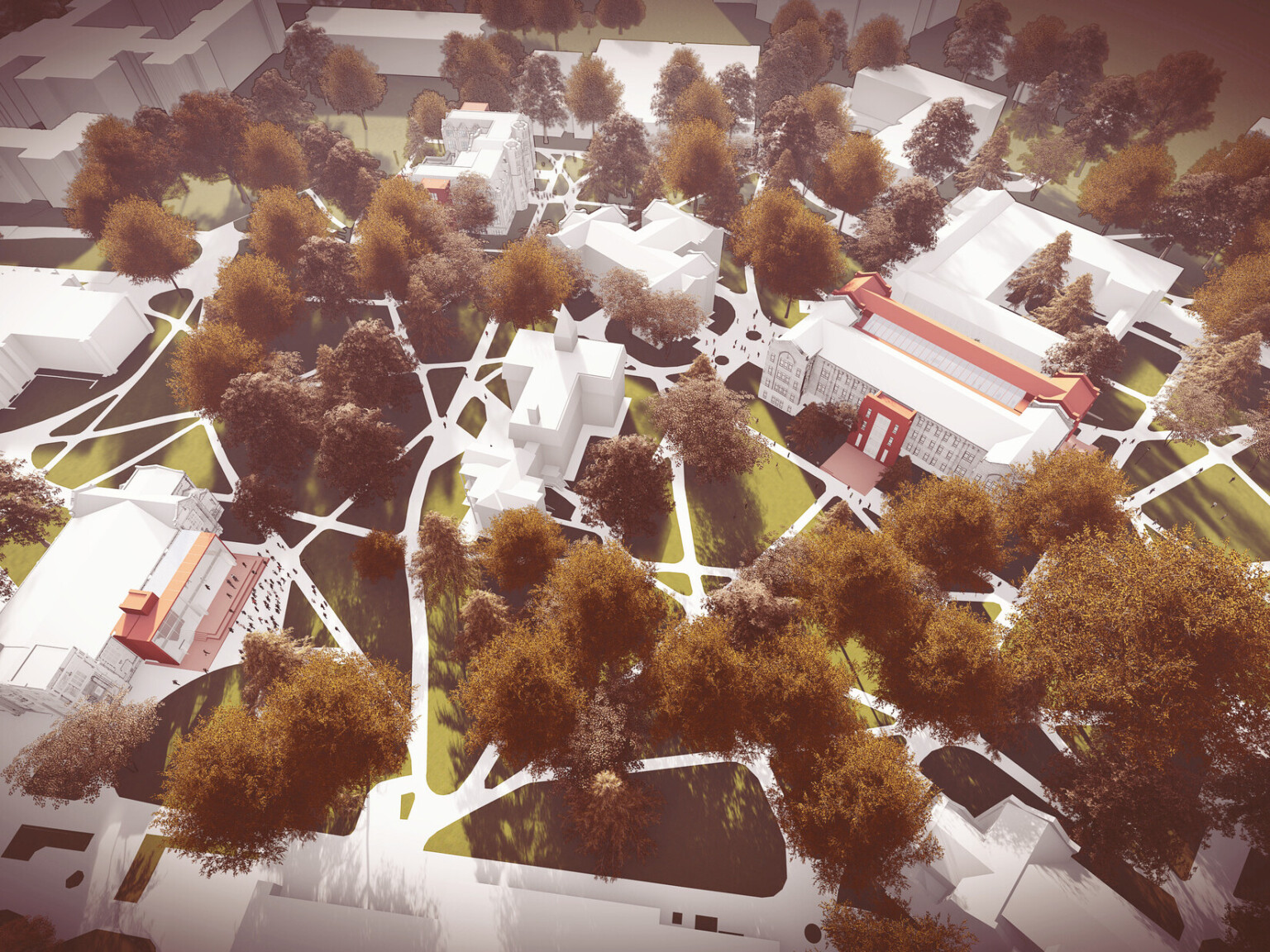
An R&D Update: Healthy Space Research Project
Why focus on Indoor Air Quality?
First, because among the four factors of indoor environmental quality – air quality, thermal comfort, visual comfort, acoustical satisfaction – current research indicates that air quality has the biggest impact on cognitive function. Second, because most studies related to IAQ were lab based with a small square footage and number of occupants, we determined that IAQ in the office setting had limited research. We identified those gaps and opportunities for workplace study, and our hypotheses aimed to address how our design impacts IAQ.
Nearly all commercial buildings track temperature to control the HVAC system, and more advanced energy codes require lighting and HVAC controls to modulate daylight and CO2, respectively. However, few existing – and even new – buildings are measuring beyond CO2 to assess IAQ. Healthy Space gathered and leveraged existing research in IEQ and took inspiration from RESET standards on how to set up our study design, particularly around sensor deployment. These findings are leading to further insights into occupant, operational, and location-based IAQ issues.
We also analyze specific IAQ optimization strategies such as green walls, air delivery, and distribution methodologies against the IAQ metrics listed above, and occupant satisfaction. This informs a feedback loop for our interior design best practices and HVAC design and operation.
Our Process
The process graphic below identifies how we managed our research. We did extensive research on IAQ monitors and tested them in our master planning process before deploying monitors firm wide, following the RESET sensor setup requirements. Chicago became the first office to meet RESET standards as a result of this program.

Our data was compared to qualitative employee feedback on existing IAQ. Following this pilot program in Chicago the same monitors were shipped to and installed to 25 other DLR Group offices.
Data Sharing for Transparency
All live data is fed directly to QLEAR, a cloud-based IEQ dashboard, which can be accessed by every employee on their desktop for viewing in real time. This has been a useful tool, especially during natural events such as forest fires in areas close to our offices where we can see spikes in air quality. This has allowed us to proactively take steps to adjust air filters or HVAC operation or use of non-VOC cleaning products and see immediate results to improved air quality even during city-wide environmental events.
The data is also shared with researchers and graduate students at partner universities. Harvard T.H. Chan School of Public Health is using our data in its Global Buildings Study and Cognitive Effects – aka the CogFx – study. And Iowa State University’s College of Design is conducting on-going research in post-graduate level studies. Our role with these research programs and transparency in our data sharing has led to similar studies for other organizations, including a Healthy Strategies pilot program for the GSA, and similar analysis completed for Chicago’s Merchandise Mart, a 4.2-million-SF commercial property in the heart of River North.

Our number one goal was to elevate the human experience for building occupants through IAQ transparency. Studies have shown that sharing this data alone can increase occupants’ positive perception of environments they cannot fully control. Currently, as a result of our Healthy Spaces study, the majority of our 30 offices are now RESET-certified, a performance-based building standard recognizing measurably healthy results for PM2.5, CO2, and TVOC levels in indoor spaces. Our goal is for all of our offices to meet the RESET IAQ Standard, which would make us the first company in the world to certify all of its permanent offices.
This is a positive step for our firm, but ultimately, we extrapolate what we learn for the benefit of our clients. The bottom line is that planning, architecture, engineering, and interiors all play a role in changing our environments for the better. But we must be willing to do the work in our own workplaces and transparently communicate the importance of these sustainable initiatives to our employees, our clients, and our industry.










